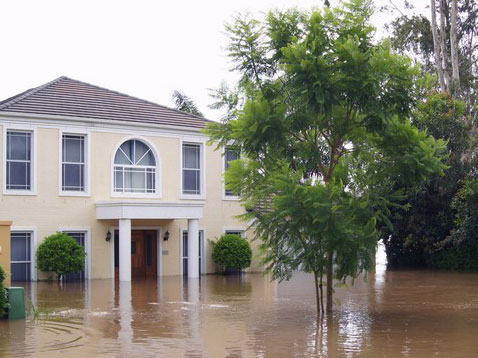Helpful Tips for Initial Salvage of Water Damaged Documents and Photos
Credit – State Library of Queensland – Thanks very much to the State Library of Queensland for their “Caring for your collections” resources – reproduced here with permission.
This guide is designed to provide helpful tips for the initial salvage of collections affected by water. It is important to attend to the damage as quickly as possible to prevent permanent damage and mould growth.
Safety First
Equipment and Materials
Procedures
Take a deep breath and try not to panic
Salvaging much loved collections can be emotionally demanding. Take heart as in most circumstances you will be able save some of your precious objects.
Create a salvage station
- Find a location away from the affected area that is as clean, dry, and well ventilated as possible. This will be where you will assess and treat your collection. Often it is best to do this offsite, away from the disaster area.
- Create an uncluttered work area using tables or other furniture that provides a flat surface. Plastic folding tables work well.
- Line tables and other flat surfaces with absorbent material such as paper towels, clean bath towels, cotton sheets, butchers paper, or blotting paper. These need to be changed regularly.
Retrieve collections from affected areas
- When able to enter affected area, clear a path to allow safe access to collections.
- Carefully place material into plastic crates or boxes and transport to the salvage area.
Assess and prioritise
- Think like an ambulance officer: identify the objects that are most at risk and attend to them first.
- Sort material into three categories: 1. Sodden 2. Partially wet 3. Unaffected
- Identify the damaged objects that are most valuable to you. This will be a very personal process.
- Use our guide “Salvaging water damaged collections” to assist in deciding which collections need attention first. Seek advice from a conservator if needed.
- Attend to high value, vulnerable, sodden objects first.
- Air dry or freeze objects following the instructions outlined below.
Salvage methods – Air drying OR freezing
Air drying – without power
- In a clean, dry, well-ventilated area, spread collections out on tables lined with absorbent paper or cloth. Make sure the paper or cloth is changed regularly. If this is not done, there is a greater chance of mould activity and physical distortion.
- Some objects such as photographic prints and negatives can be dried on washing lines. This must be done with care.
- To maximise air movement, open windows and doors.
- For specific details on how to air dry different types of objects, please refer to our guide “Salvaging water damaged collections”.
Air drying – with power
- Follow instructions above.
- Use fans to maximise air circulation and speed up drying. Keep them at a low speed to ensure materials are not blown around during the drying process.
- As high humidity will encourage mould growth, it is a good idea to use portable dehumidifiers. These can be hired from hire shops and a number of specialist equipment suppliers.
- Do not use heaters or hair dryers as they will encourage the growth of mould and can cause distortion of objects.
OR – Freezing
- Material identified as safe for freezing should be carefully wrapped and placed in a freezer. If there is going to be a delay of more than a day, do not seal plastic bags as this will encourage mould. Try to store in a cool, well-ventilated area until freezing occurs. If you have a large number of objects requiring freezing, you may have to use a commercial freezing facility.
BASIC FREEZING PROCEDURE:
1. Place objects in freezer bags or garbage bags.
2. To prevent holes in packaging, always double bag. This is very important as holes will allow ice crystals to form inside the package.
3. Expel excess air.
4. Seal thoroughly with packaging tape (not masking tape).
5. Place in freezer in a manner that prevents damaging the packaging or the contents.
6. Leave for a minimum of two days or until you have enough time to treat the object.
7. When ready to work on the objects, remove from the freezer and place in a cool area to defrost. Do not unwrap until the package is completely defrosted. Depending on the size of the package, this may take several days.
8. Once defrosted, air dry object as described above.
9. For more detailed instructions on freezing please see our guide on “Freezing water damaged and insect infested collections” for more information.


